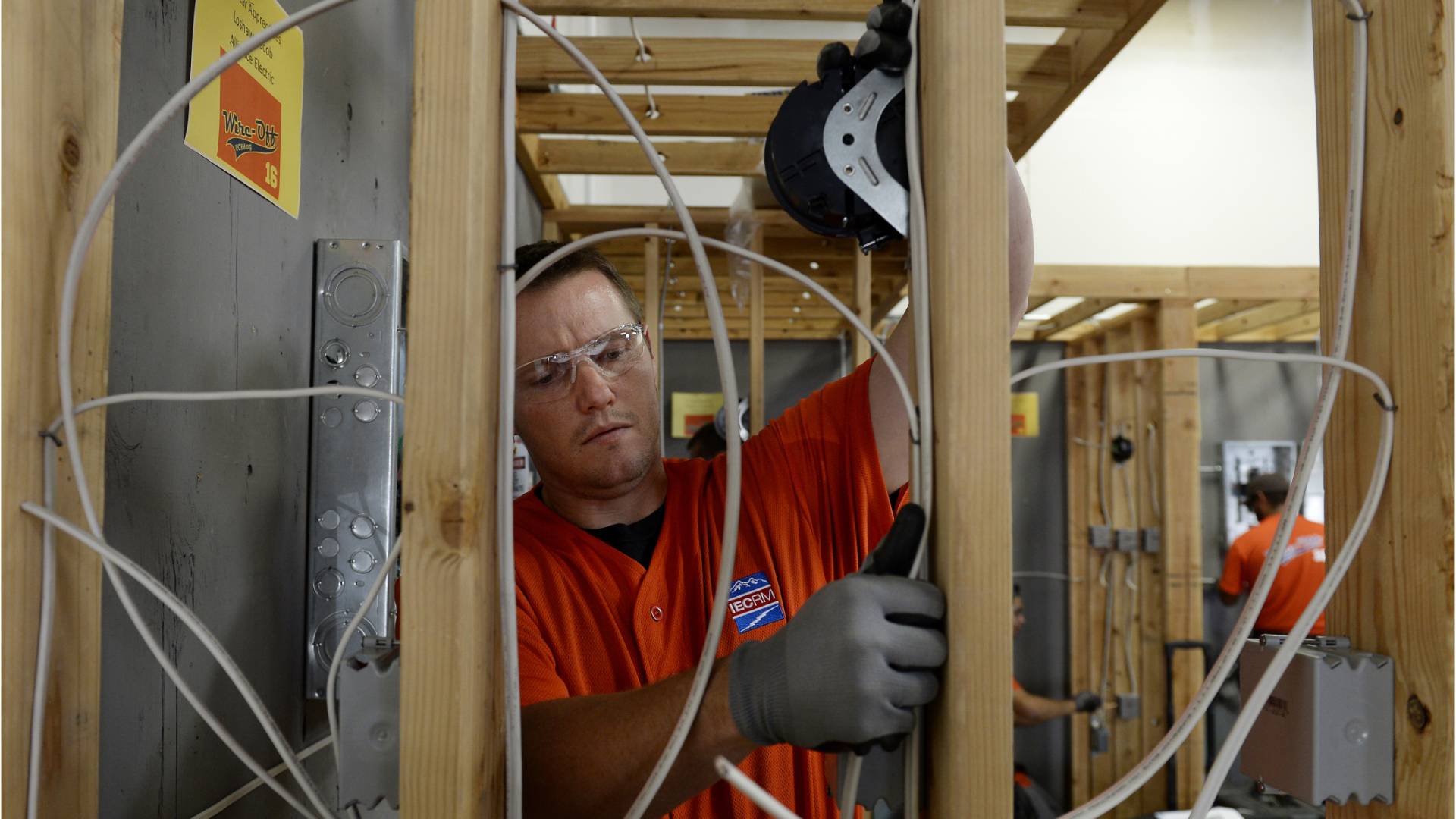Electricians
Electrician, Industrial Electrician, Inside Wireman, Maintenance Electrician
 Select a military branch to see samples.
Select a military branch to see samples.
Aircraft Electrical And Environmental Systems; Aircraft Electrical And Environmental Systems Craftsman; Cyber Operations, Network Operations; Electrical Power Production Craftsman; Electrical Power Production Journeyman; Electrical Systems Craftsman; Facility Systems Manager; Heavy Aircraft Integrated Avionics; Heavy Aircraft Integrated Avionics Craftsman; Heavy Aircraft Integrated Avionics Helper, C4ISR Mission Systems (E-3, E-4, E-7, EC-130H, RC-135, VC-25)
AH-64 Armament/Electrical/Avionics Systems Repairer; Aircraft Electrician; Automotive Maintenance Warrant Officer; Avionic Mechanic; Cavalry Scout; Combat Engineer; Construction Engineering Technician; Interior Electrician; Powerline Distribution Specialist (RC); Tactical Power Generation Specialist
Avionics Electrical Technician; Damage Controlman; Electrician's Mate; Marine Safety Specialist Engineer; Material Maintenance Specialty; Naval Engineering Specialty
Aircraft Avionics Technician, AV-8B; Aircraft Avionics Technician, U/AH-1; Aircraft Communications/Navigation Systems Technician, KC-130; Aircraft Electrical Systems Technician, KC-130; Aviation Electronic Micro/miniature Component and Cable Repair Technician, IMA; Avionics/Maintenance Technician, Unmanned Aircraft System (UAS); Cyberspace Warfare Operator; Expeditionary Airfield Systems Technician; Network Administrator; Utilities Chief
Advanced Construction Electrician; Automated Electrolytic Oxygen Generator (AEOG) Mechanical Maintenance Technician; Constructionman; Electrical Systems Maintainer; Electrolytic Oxygen Generator (Model 6L16) Electrical Technician; Gas Turbine System Technician (Electrical); LPD-17 Class Electric Plant Maintainer; Officer in Charge, Naval Construction Battalion Unit; Submarine Propulsion Plant Electrical Operator; Surface Propulsion Plant Electrical Operator
Electrical Systems; Electrical Systems Apprentice; Electrical Systems Craftsman; Electrical Systems Helper; Electrical Systems Journeyman
What they do:
Install, maintain, and repair electrical wiring, equipment, and fixtures. Ensure that work is in accordance with relevant codes. May install or service street lights, intercom systems, or electrical control systems.
On the job, you would:
- Prepare sketches or follow blueprints to determine the location of wiring or equipment and to ensure conformance to building and safety codes.
- Place conduit, pipes, or tubing, inside designated partitions, walls, or other concealed areas, and pull insulated wires or cables through the conduit to complete circuits between boxes.
- Work from ladders, scaffolds, or roofs to install, maintain, or repair electrical wiring, equipment, or fixtures.
Knowledge
Engineering and Technology
- building and construction
- mechanical
Business
- management
- customer service
Math and Science
- arithmetic, algebra, geometry, calculus, or statistics
Skills
Basic Skills
- listening to others, not interrupting, and asking good questions
- talking to others
Problem Solving
- noticing a problem and figuring out the best way to solve it
People and Technology Systems
- thinking about the pros and cons of different options and picking the best one
- figuring out how a system should work and how changes in the future will affect it
Abilities
Hand and Finger Use
- put together small parts with your fingers
- keep your arm or hand steady
Ideas and Logic
- notice when problems happen
- make general rules or come up with answers from lots of detailed information
Verbal
- listen and understand what people say
- communicate by speaking
Attention
- pay attention to something without being distracted
Personality
People interested in this work like activities that include practical, hands-on problems and solutions.
They do well at jobs that need:
- Cautiousness
- Attention to Detail
- Dependability
- Integrity
- Perseverance
- Achievement Orientation
Technology
You might use software like this on the job:
Word processing software
- Microsoft Word
- Socrates Contractor's Library
Analytical or scientific software
- Construction Master Pro
- SoftEmpire Electrical Calculations
Data base user interface and query software
- Database software
- Shafer Service Systems
Education
Education: (rated 3 of 5)
certificate after high school or
high school diploma/GED
usually needed
high school diploma/GED
usually needed
Job Outlook
Bright
New job opportunities are very likely in the future.
Explore More
- Electric Motor, Power Tool, & Related Repairers
- Electrical Power-Line Installers & Repairers
- Helpers--Electricians
- Lighting Technicians
- Plumbers, Pipefitters, & Steamfitters
You might like a career in one of these industries:
See more details at O*NET OnLine about Electricians.





